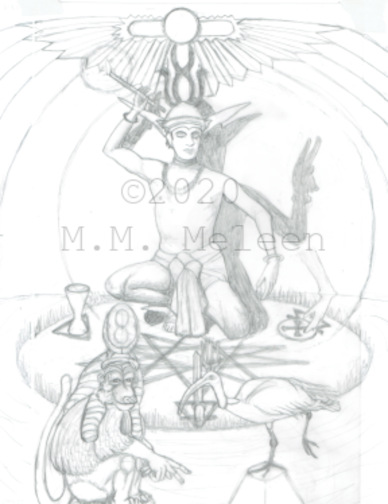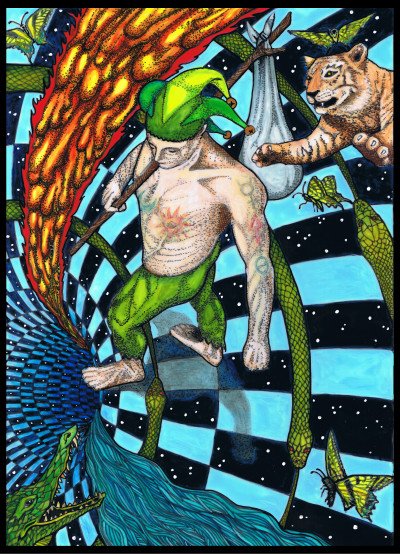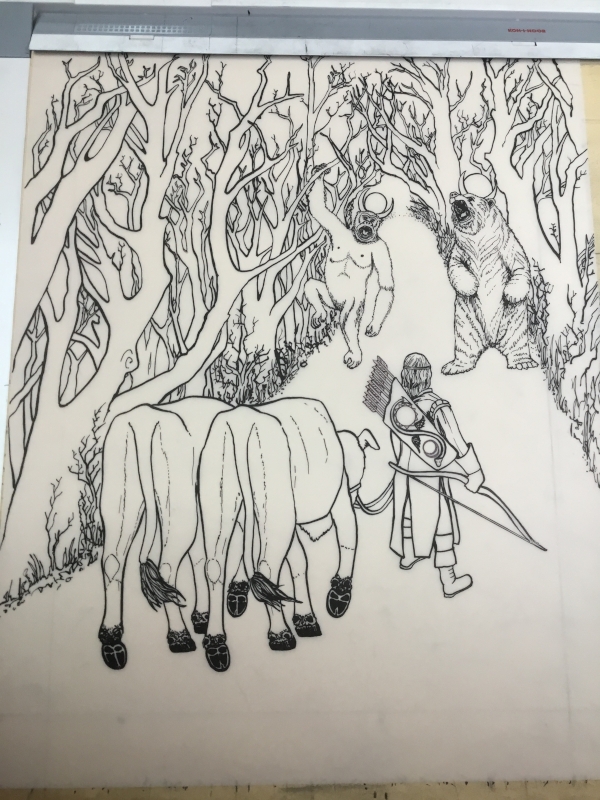I’ve always been fond of this card, the Six of Swords. It’s one of the most pleasant of the Swords series: Science, also known as the Lord of Earned Success. What better feeling after the last card, Defeat, than success that you have earned yourself, through the strength of your will (the solar Sixes), and the power of the mind (intelligent Mercury, ruler of the decan) in brilliant Aquarius, sign of genius and innovation.
777 lists the magical image of the decan as “A man arrayed like a king, looking with pride and conceit on all around him”. The idea of a proud and arrayed king is very solar (Tiphareth and all Sixes), and I suppose with genius comes some preening. That he looks upon all around him seems fitting in the sense that Aquarius as the Star card is symbolic of the stars – throughout the entire Universe – and thus Saturn, ruler of Aquarius.
The king in this picture is arrayed like a Pharaoh, on his throne, bejeweled hands planted firmly on his knees as he surveys his domain. Don’t pharaohs always seem to be depicted in media as full of pride and conceit? I suppose that is natural when you are a living god, or at the very least a direct representative of deity. Behind him in the starry skies, the solar boat travels the skies. He is arrayed in regal robes decorated with the constellations – though it is hard to see that in the uncolored ink drawing.
He wears the Pshent crown also known as sekhemty or “Two Powerful Ones”, the double crown that combines the white hedjet crown of Upper Egypt with the red deshret crown of Lower Egypt. The above and the below, ruled by Mercury just as the pharaoh rules “all around him”.
Speaking of Mercury, I could not resist adding the ibis and ape. Both are in the Magus (Mercury) card of this deck. (I put the rough pencil sketch of the Magus below, posted so long ago in 2020, and maybe even drawn in 2019. It feels so very long ago! It’s all done in ink but I haven’t photographed it or shown the actual finished work yet.)
The ape and ibis are both associated with Thoth (Mercury) and the ibis is also present on some Star cards (Aquarius). Between them is an “armillary sphere” or spherical astrolabe, marking out the latitudes and longitudes of celestial navigation. While the device probably wasn’t in existence in ancient Egypt, it was used in the times of Hellenistic and Roman Egypt, so it may be a vision of the future (Aquarius) as well as a guide to a future destination.

[6 of swords- coming soon]

